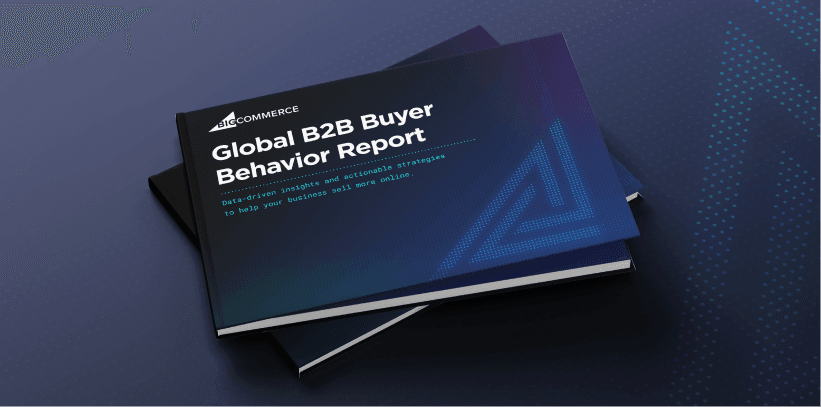Data Migration: Your Answer to Seamless Data Integration and Management


Data Migration: Your Answer to Seamless Data Integration and Management
Get The Print Version
Tired of scrolling? Download a PDF version for easier offline reading and sharing with coworkers.
A link to download the PDF will arrive in your inbox shortly.
As a BigCommerce Enterprise plan customer, you can engage a variety of resources designed to assist with developing and managing your ecommerce site. One of the most valuable resources we offer is access to our Professional Services teams.
We understand how much goes into having a successful online store, which is why we maintain a team of industry experts to support customers as they grow their ecommerce business.
To show customers how to maximize these teams’ benefits, we’ve launched a blog series that breaks down each team’s role, how they can help you, and best practices for working with them.
In Part 4 of our series, we interviewed Paige Locke, Data Migration Technical Project Manager at BigCommerce to gain insights into how her team helps BigCommerce customers see success.
What does the Data Migration team do for customers?
Paige Locke: “Data Migration helps BigCommerce customers easily manage their legacy data. If they have all their data custom formatted in an SQL file server, we’ll reformat it to fit BigCommerce’s standards. We also help transfer customer data from other platforms into their BigCommerce site.
“If a customer has a smaller amount of data and doesn’t want to work directly with the Data Migration team, we have apps available for migrating data from different ecommerce platforms. That way, they can simply install our app and upload their data to their store. If something goes wrong, we’re always there to provide support.
“Data Migration also helps with BigCommerce to BigCommerce transfers and V2 to V3 migrations. Additionally, we’ve built custom promotions tools to assist customers with managing their data moving forward.”
What is an example of how Data Migration has successfully worked with a customer?
Locke: “There are a number of customers we’ve worked with, and we always aim to work closely with our customers to ensure they have a smooth data migration process. A project that stands out is Pickleball Central.
“Pickleball Central came from Volusion, and Volusion's data schema can be challenging to navigate. We utilized our core Volusion tooling and added a number of ETL features to ensure Pickleball’s data was compatible with BigCommerce. With long-term data management in mind, we also set the customer up to easily manage their data going forward.
“We had to change their product construction so they had the runway to manage their inventory. Pickleball was pleased with the results, and they've been on BigCommerce since then.”
What tips do you have to get stakeholders aligned on a project?
Locke: “Ensure all stakeholders understand their role in the migration process, especially regarding data migration. Customers that have the most successful migrations have one primary stakeholder in charge of data. The migration process can be incredibly detailed, so to streamline communication throughout the process, appointing one stakeholder on the customer’s side is recommended.
“Stick to one person and have them funnel information to their team and be in charge of submitting data to BigCommerce. Also, make sure to have a standardized way to export data.”
What are the most common issues that brands run into, and how can they avoid them?
Locke: “Often, I notice brands don’t understand how their data will function in BigCommerce, which slows down their migration.
“It’s good to have some advanced context on how the platform works. Customers who have had training before starting the migration process usually have a much better understanding of how their data will live in BigCommerce.”
What are your top tips for a successful launch on BigCommerce?
Locke: “The number one way to be successful is to be organized and do a lot of testing before launch. This means testing things like checkout flows, placing orders, refunds, and subscriptions.
“Customers should plan for a week of just testing. If they encounter issues during testing, it’s important to know ahead of time what features can be a fast follow versus a launch blocker. This helps customers go live much quicker.”
What is something more customers should take advantage of?
Locke: “The Data Migration team. We see many cases where a last-minute migration request is surfaced, and then the data migration becomes a launch-blocker for the customer. Thinking about your data migration strategy from the start of a site implementation helps prevent this.
“It takes about two weeks for our team to migrate data well. Have a data migration strategy and take advantage of the internal team that can help do it.”
What’s your favorite BigCommerce feature?
Locke: “Many customers don't know they can add product URLs via a CSV file. If a customer wants to do that on a bulk level, they don’t have to go through each product and make individual changes. All they need to do is upload a CSV.”
What are some of your favorite BigCommerce brands?
Lock: “I have a really niche favorite, which is Salter House. It's a fashion store in New York that’s a cool up-and-coming brand on BigCommerce.”
The final word
Work with our Data Migration team to seamlessly integrate data into your BigCommerce store. This service not only guarantees the correct upload of data but also sets it up for you to efficiently manage, saving you time and effort that you can use to grow your business.
Check out our other Professional Services teams and join the BigCommerce Community on Facebook to collaborate, share advice, and learn from the success of other customers on our platform.

Annie is a Content Marketing Writer at BigCommerce, where she uses her writing and research experience to create compelling content that educates ecommerce retailers. Before joining BigCommerce, Annie developed her skills in marketing and communications by working with clients across various industries, ranging from government to staffing and recruiting. When she’s not working, you can find Annie on a yoga mat, with a paintbrush in her hand, or trying out a new local restaurant.


